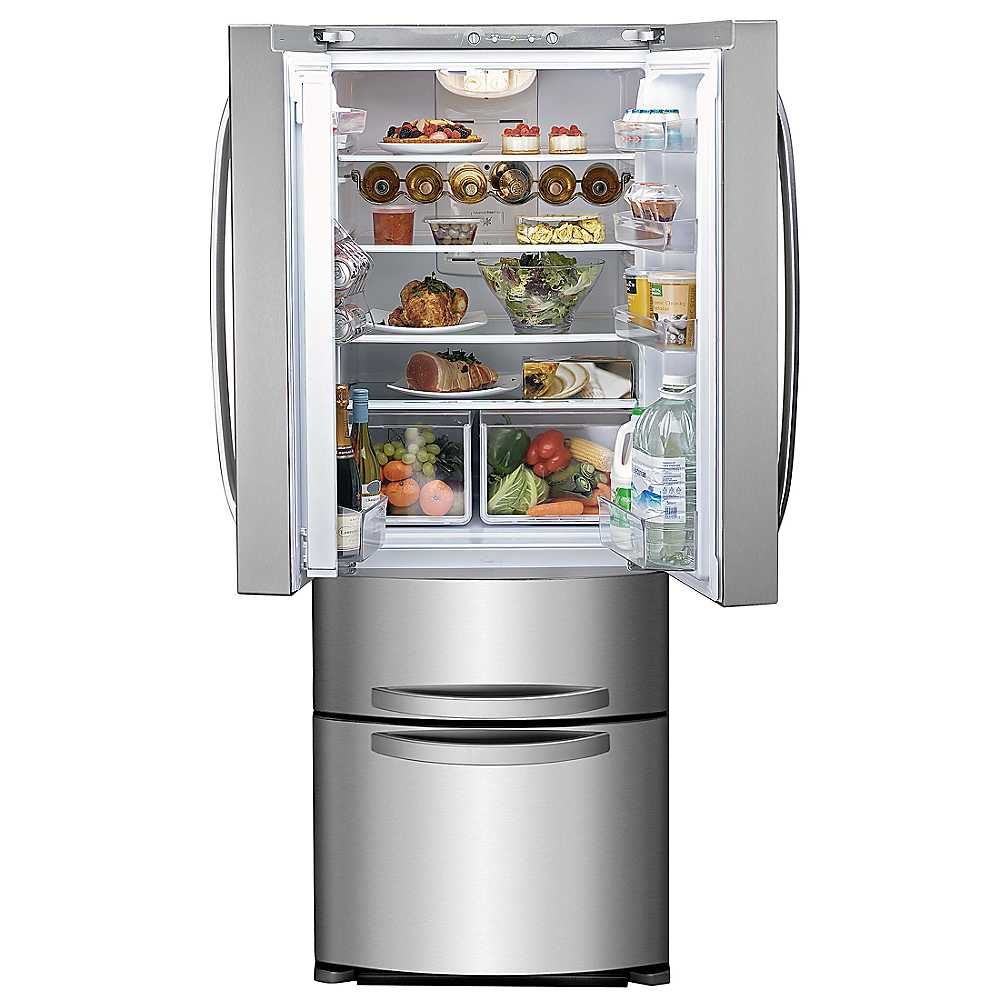Next Day Delivery Available
The history of the refrigerator
Image by: Colin Anderson
In the contemporary kitchen, the refrigerator is king. It’s the life-saver of all white goods, the rectangular hub to keep those perishable items cool. Without it the milk would curdle, the meat would go off, the cucumber would go furry, and….well, you get the picture.
But the humble refrigerator does, in fact, have a rich and varied history. From its humble origins to the kitchen-based behemoth it’s now become, here’s a potted history of the refrigerator.
In The Beginning…
There have always been methods of some description to refrigerate food. Whether it was snow and ice, caves and cellars, or cool streams, there have always been ways to keep things cool. To preserve meat and fish, the techniques of smoking and salting were used (as they often still are today). Ice was cut and stored by the Chinese in 1,000 B.C, and around 500 B.C. the Indians and Egyptians made ice by putting water in earthenware pots and keeping them wet.
England in the 18th century ushered in a further advance of cooling and refrigeration techniques – in the winter, servants collected ice and stored them in icehouses. Sheets of ice were covered in salt, wrapped with strips of flannel and then stored underground – this kept them frozen until the summer months. From the beginning of the 19th century, England used ice boxes to keep things cool. In the mid-1800s in America, natural ice was collected and distributed for both home and commercial purposes, with the ice trade between the South and Boston being one of the first casualties of the Civil War.
Wooden boxes lined with zinc or tin and insulated with various materials - including cork, sawdust, and seaweed - were used to hold blocks of ice and refrigerate food. A drip pan collected the melt water - and had to be emptied daily.
Early Pioneers
Early refrigeration pioneers included Scotsman, Dr William Cullen, who conducted a series of studies in the early 1700s that focussed on the evaporation of liquids in a vacuum.
Another progenitor in the early work of refrigeration was Londoner, Michael Farady. In the early 1800s he created a process of liquefying ammonia which caused cooling.
And Dr John Goorie of Florida created a special ice machine to cool air and alleviate the symptoms and suffering of people suffering from yellow fever.
The refrigeration and compression systems used in today’s refrigerators employs the same concept created by Farady’s early experimental model – involving compressing gas into a liquid that then absorbs heat, which returns it to gas. In its most simplified form, this is the process that occurs in the modern fridge, freezer, dehumidifier and air conditioner.
America endured a series of warm winters in 1189 and 1890, and this created a shortage of natural ice. Mechanical refrigerators were created to store fish, as well as helping keep fresh the products of meat manufacturers, dairies and brewers. An extension of this was the application of these cooling processes in groceries, railroad cars, and manufacturing industries.
The First Home Refrigerator
Fort Wane, Indiana, 1911 was the location of the first home refrigerator. General Electric unleashed to the public a unit which had its origins and design from a French monk. The subsequent Guardian fridge – an early incarnation of the Frigidaire – was interestingly put together in a wash house in a backyard in Fort Wayne.
The US introduced two dozen home refrigerators in 1916 – the Servel and Kelvinator. They used compressors that were driven by belts attached to motors that were situated in an adjoining room or basement. By 1920 the number of fridges had grown to more than 200.
The Kelvinator became first fridge to have an automatic control, in 1918. A model manufactured in 1922 had a wooden cabinet, two ice cube trays, a water-cooled compressor, and nine cubic feet of storage space. It cost an exorbitant $714. The first self-contained unit was manufactured by Frigidaire in 1923 – and by the mid 20s, porcelain and steel cabinets began appearing in the fridges.
A New Era Of Refrigeration
The 1920s and 30s unleashed the first electric refrigerators - complete with ice cube compartments – to consumers.
However, it wasn’t until after World War II that the modern refrigerator as we know it started being mass produced. This led to the subsequent replacement of sulphur dioxide with Freon 12, and this has become the most commonly used refrigerant.
Technology for refrigeration methods chopped and changed somewhat during the 50s and 60s, with features and innovations such as automatic ice makers and automatic defrost facilities featuring on some models.
Refrigeration’s Green Future The relentless drive for everyone to go green and play their part in protecting the environment has meant that, from the 70s, there has been a demand and subsequent delivery of more energy-efficient refrigerators. This has also led to the elimination of chlorofluorocarbons.
Now, of course, the refrigerator is the dominant white good in any modern kitchen – practical, robust, and indispensable; and if you need any spare parts for your fridge then Ransom Spares will be able to help!
By Lee Gilbert
Category: Articles, News & Tips







 By Lee Gilbert
By Lee Gilbert On 30th Aug 2013 at 17:23
On 30th Aug 2013 at 17:23

No Comments